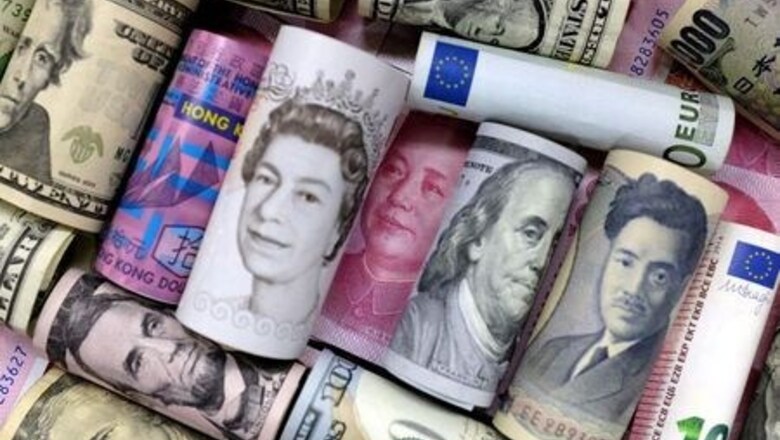
views
SINGAPORE: The dollar found support on Wednesday as a stock market slide spooked investors into selling riskier currencies, while worries about Brexit pushed the pound down to a new six-week low.
The moves have made for a nearly 2% bounce in the greenback, against a basket of currencies, from the more than two-year lows it touched earlier in the month . The safe-haven yen also climbed to a one-week high of 105.83 per dollar.
“The tech selloff has caught the market by surprise and it is a bit jittery as to whether there are broader implications,” said Bank of Singapore currency analyst Moh Siong Sim.
“It might force some position unwinding in other parts of the market, and that’s probably what we’re seeing right now,” he said. The dollar has been sliding since March.
In the Asia session the dollar was mostly steady, pulling back from early gains on most majors as U.S. equity futures pared losses – with Nasdaq 100 futures swinging to trade 0.6% higher in the afternoon and S&P 500 futures flat.
The risk-sensitive Antipodean currencies crept from two-week lows with the futures trade, to leave the Aussie ahead 0.2% at $0.7226 and the kiwi steady at $0.6621.
Sterling was unable to shake pressure as fears grow that Britain is preparing to undercut its Brexit divorce treaty. It dipped 0.2% to $1.2950, its lowest since the end of July.
The pound also languished at a six-week low of 90.57 pence against the euro and 137.04 yen .
Britain will set out its blueprint for life outside the European Union on Wednesday, publishing legislation a government minister acknowledged would break international law in a “limited way”.
“This could derail trade negotiations with the European Union and further weigh on sterling,” said Commonwealth Bank of Australia currency analyst Elias Haddad.
ECB WATCH
An overnight slump in the oil price dragged down oil exporters’ currencies. The Norwegian krone extended an overnight fall to hit a more than six-week low of 9.1840 per dollar.
The Canadian dollar dropped to a three-week low though steadied in Asia ahead of a Bank of Canada policy decision due at 1400 GMT. Investors expect no changes to interest rates and will focus on the tone around the outlook.
The euro was also steady as investors await Thursday’s European Central Bank meeting with some trepidation.
The common currency has lost about 2% since posting a 28-month high above $1.20 on Sept. 1, spurred lower by comments from ECB chief economist Philip Lane, who said the exchange rate mattered to monetary policy.
Any hint of concern at the currency’s rise, or that low inflation will require ultra-easy policy for a very long time could whack the euro lower again and boost the dollar.
“Lane appears to have succeeded in drawing a line in the sand at $1.20 at least for the time being,” said Rabobank senior FX strategist Jane Foley. “We see scope that euro/dollar could dip further towards the $1.17 level on a one-month view.”
The euro last traded at $1.1772.
In emerging Asia the Indonesian rupiah was kept under pressure by concerns about the independence of the central bank after parliament started reviewing proposals for a Monetary Council that would allow ministers a vote at policy meetings.
Bank Indonesia said it intervened in the spot market to smooth volatility, but the rupiah still dropped 0.6%.
Other EM currencies also traded under pressure, notably the Turkish lira , which fell to a record low on Tuesday and is within a whisker of the 7.5 per dollar mark.
Disclaimer: This post has been auto-published from an agency feed without any modifications to the text and has not been reviewed by an editor



















Comments
0 comment